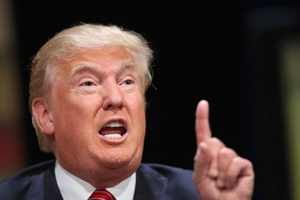Washington, Jan 27: Republican presidential front runner Donald Trump has commented on India for the first time after he entered the presidential race, saying that the country is doing great and no one is talking about it.
 "India is doing great," Trump told the CNN in an interview on Monday.
"India is doing great," Trump told the CNN in an interview on Monday.
After hitting the presidential campaign trial, this is for the first time that Trump has gave a glimpse into his thought about India, even as he has been openly critical about many countries like China, Mexico and Japan in many of his speeches.
"That was the beginning of China. That was the beginning of India, when India -- by the way, India is doing great. Nobody talks about it. And I have big jobs going up in India. But India is doing great," Trump said.
"But that was the beginning of China. That was the beginning of India. Look at everything I told you. Everything I told you is all right, whether it's Iraq, whether it's Iran, whether it's China, whether it's India, whether it's Japan," Trump said referring to his CNN interview in September 2007.
"Just look at this country. We have gone from this tremendous power that was respected all over the world to somewhat of a laughing stock," he said.
"All of a sudden, people are talking about China and India and other places, even from an economic standpoint. America has come down a long way, a long way. The United States has come down a long way, and it's very, very sad. We're not respected, he added.





Comments
No wonder! Trump, a business tycoon, might have been given concessions and gained millions in profit by the current Indian regime
thumba hogaluvavarannu namba bedi!
We Indians are always great. Your country is some what great because of we indians there. Now this guy is trying to develop his business as well as some sympathy from indians.. ONDE KALLIGE YERADU HAKKI..
Heege heli heli India wannu peddara salige serisibedi....nimma poorvajaranthe . USA ondu kandodi iddanthe
Add new comment